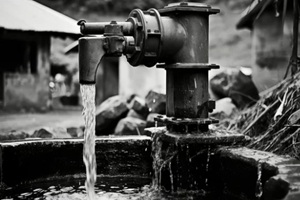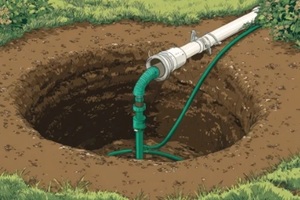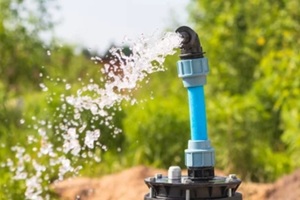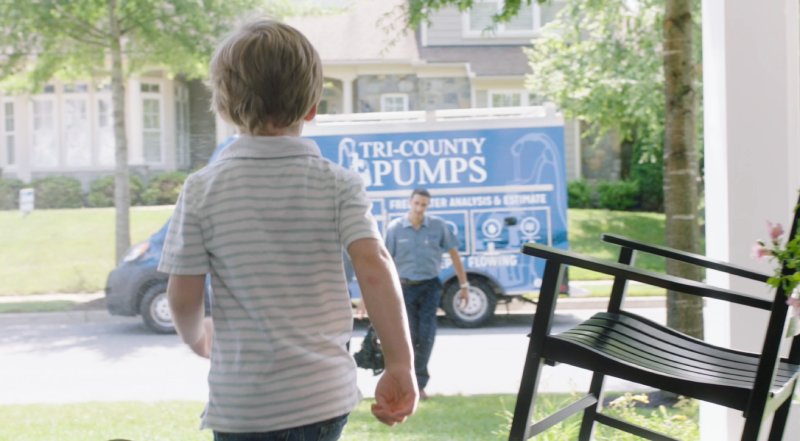
A reliable well pump is the heart of your water system, and keeping it in good shape means protecting both your water quality and your household’s daily routine. In Maryland, where private wells supply thousands of homes, the environment presents several special challenges, including high iron levels, hard water, and seasonal weather fluctuations.
Knowing how to spot early warning signs, stay ahead of seasonal risks, and schedule the right inspections can make all the difference between uninterrupted service and costly repairs.
Read on for practical maintenance tips that help keep your water flowing clean and steady throughout the year.
Maryland’s Well Water Realities
In Maryland, an estimated 13% of residents obtain their household water through privately owned wells rather than public systems. Owning a well means taking responsibility for routine testing and maintenance, and local groundwater conditions make that responsibility even more important.
While groundwater quality is generally good across the state, many regions experience naturally elevated levels of iron and manganese, higher hardness, and occasional low pH levels. These factors can place stress on pumps, pipes, and fixtures over time. Homeowners who understand these conditions can take practical steps to protect both equipment and water quality.
Local conditions differ across the state; communities in coastal plain areas often deal with iron and manganese, while parts of the Piedmont see hardness and occasional low pH. Staying aware of these regional patterns makes routine maintenance more effective and keeps Maryland’s private wells delivering safe, reliable water.
Maryland also has specific requirements at the wellhead. The state code mandates that the top of the casing or pitless unit sit at least eight inches above the finished grade, and in flood-prone areas, the University of Maryland Extension recommends a minimum of 24 inches.
A secure cap or sanitary seal must always be intact, and wells are required to carry an identification tag from the Maryland Department of the Environment that links to construction and service records.
Setback rules require wells to be placed at safe distances from property lines, roads, and septic systems. These standards are designed to help protect water sources from contamination and should guide any homeowner’s maintenance approach.
Seasonal Maintenance Practices
Seasonal shifts in Maryland bring changing conditions that affect groundwater, equipment, and the surrounding area around the wellhead, making it essential for homeowners to adopt specific maintenance habits throughout the year to keep their systems reliable and the water safe.
Spring Readiness
Spring is the season to take stock of the well site. To keep stormwater from collecting near the well, the soil around the casing should be graded so it slopes away. Take the time to clear leaves, mulch, or debris away from the cap to keep the area clean.
Spring provides an ideal opportunity to book both the recommended yearly inspection and a water quality test. National guidelines recommend annual mechanical inspections, along with laboratory testing for bacteria, nitrates, pH, and total dissolved solids.
Summer Vigilance

Maryland summers often bring heavy thunderstorms or even hurricanes. After major weather events, homeowners should inspect the well cap for damage and check for erosion or standing water near the casing.
If a flood has submerged the wellhead, the pump should remain off until the system has been disinfected and retested to make sure that it’s safe to use. Running the pump before water quality is confirmed can spread contamination through the household system.
Fall Preparation
Autumn is the ideal time to trim vegetation and maintain a clear zone of three to five feet around the casing. Doing so keeps pests away and makes inspections easier.
It’s also wise to clean and tighten the cap before winter arrives, giving the system a better defense against freezing conditions and potential entry points for insects or small animals.
Winter Protection
With frost depth in Maryland averaging around 30 inches, water lines should be buried below that point. Any exposed pipes should be insulated, and pitless adapters should be checked for protection.
Homeowners should repair cracked well caps before freeze-thaw cycles begin, as even small gaps can allow water intrusion or damage.
Professional Inspections That Pay Off
An annual inspection by a licensed well contractor helps identify problems early. A thorough checklist often includes:
- Output and pressure: Flow testing at spigots, comparing system pressure to past readings, and inspecting the pressure switch contacts.
- Pressure tank health: Measuring precharge with the tank drained, verifying that pressure aligns about two psi below the cut-in point. Rapid cycling usually points to a waterlogged tank, an improperly set switch, or leaks.
- Electrical and controls: Checking pump amperage and voltage, assessing insulation and conduit seals, and confirming proper grounding. Surge protection is strongly recommended in lightning-prone regions.
- Wellhead integrity: Inspecting the casing for cracks, confirming the cap’s seal and vent screen, verifying grading, and making sure the well tag is present.
- Water quality screen: Annual testing for bacteria, nitrate, pH, and dissolved solids is the minimum standard, with more comprehensive panels every few years.
Homeowner Checks That Prevent Damage
Simple observations can alert homeowners to pump problems before they escalate. Short cycling, when the pump turns on and off every few seconds or minutes, can destroy motors and switches if left unchecked.
Common causes include a waterlogged pressure tank or an incorrectly set switch. Falling water pressure or declining flow may indicate pump wear, clogged intake, or aquifer changes. Taking note of these warning signs and contacting a professional quickly can extend pump life and reduce repair costs.
Protecting The Area Around The Well
The surroundings of the well play a major role in long-term performance. Any fertilizers, pesticides, fuel, salt, and other chemicals should never be stored or applied close to the casing.
Positive grading helps keep the wellhead high and dry, and all buried lines should be protected below frost depth. In Maryland’s storm-prone climate, grounding and surge protection for pump controls provide an additional layer of defense.
Keeping Your Well Pump Reliable Year-Round

Regular upkeep, seasonal awareness, and professional inspections all play an important role in protecting your water supply. At Tri-County Pump Service, we have been helping homeowners in Maryland, Virginia, and West Virginia maintain dependable well systems for over 30 years.
If you’ve noticed changes in pressure, want to schedule an annual inspection, or simply need expert guidance on water quality, we are here to help. Get in touch today by scheduling a free water analysis and estimate through our website, calling 1-(301)-783-0038, or connecting with us through our online contact form to keep your water flowing the way it should.



